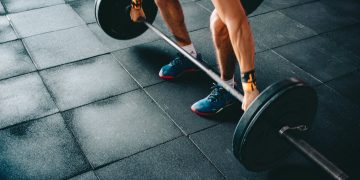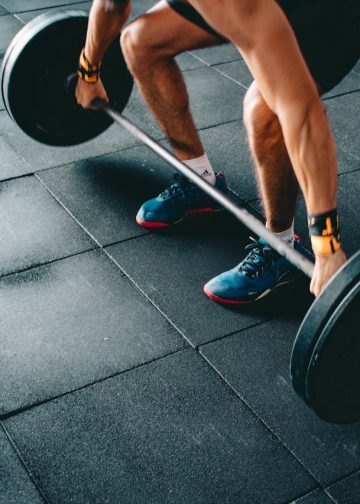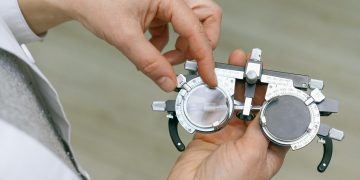If your goal for this summer is to have the ultimate summer body, one in which you can wear your loose tank tops or backless summer dresses to flaunt your back gains, then you need to gear up at the gym.
Training your lat muscles, delts, and traps is going to give your back the definition you want, and a great way to achieve this is through barbell back exercises. In this article, we bring you some fun and easy barbell exercises that will give you the toned, strong back you are looking for.
Why Barbell Back Exercises Work So Well
Back Muscles mean focusing on training the network of muscles that form it. This means your lats, traps, rhomboids, spinal erectors, and rear delts. Why the Barbell is the best suited for training these muscles is because the barbell allows you to lift heavier loads than dumbbells or cables, which is important in this type of Strength training.
It images multiple muscle groups at once with compound movements. You can perform progressive overload, which allows for better muscle growth, and lastly, it not only builds muscle but also provides for improved posture and stability.
1. Barbell Deadlift
Deadlift is the most recommended exercise by trainers to build your glutes and hamstrings, but what most people don’t know is that when done with a barbell, it is also great for your back. It hits your entire posterior chain, which means the lats, traps, spinal erectors, glutes, and hamstrings.
How to Do It:
- Stand with your feet shoulder-width apart, barbell over your midfoot.
- Bend at the hips and knees, grip the bar slightly outside your legs.
- Keep your chest up, back straight, and engage your core.
- Drive through your heels to lift the bar, extending hips and knees together.
- Lower the bar under control, hinging at the hips first.
Posture Tips:
- Keep your back flat, not rounded. Think “chest proud.”
- Engage your lats by pulling the bar into your shins before lifting.
- Don’t jerk the bar—smooth, controlled motion is safer and stronger.
Recommended Weights:
- Beginners: Start with just the barbell (20kg/45lbs) to nail technique.
- Intermediate: Progress with 1–1.5x your body weight.
- Advanced: 2x body weight or more, depending on your training history.
2. Barbell Bent-Over Row
If you want some well-defined traps, something in which you could flaunt your halter neck tops, or if you’re a man waiting to show your new build through the summer vest, then bent-over rows with a barbell is the exercise for you. We are talking about the lats, rhomboids, and traps.
How to Do It:
- Hold the barbell with an overhand grip, hands shoulder-width apart.
- Bend forward at the hips until your torso is about 45° (or lower).
- Keep your back flat, knees slightly bent.
- Pull the bar toward your lower ribcage, elbows tight to your body.
- Slowly lower the bar back down.
Posture Tips:
- Avoid jerking, keep movements smooth.
- Think of pulling with your elbows, not your hands.
- Keep your core tight to avoid rounding your back.
Recommended Weights:
- Beginners: Barbell only or 30–40% of your body weight.
- Intermediate: Work toward 50–75% of your body weight.
- Advanced: Challenge with heavier loads, but always maintain form.
3. Barbell Rack Pulls
Rack pulls are similar to deadlifts, but they get their name from the fact that the rack is utilized in this exercise. This is great for your upper back as it focuses on your traps and spinal erectors. This is great for people who want to build their back but reduce exertion on their lower back.
How to Do It:
- Set the barbell on safety pins or blocks, just below knee level.
- Stand with feet shoulder-width apart, grip the bar overhand.
- Pull the bar straight up by extending hips and shoulders.
- Lower the bar back to the rack with control.
Posture Tips:
- Keep the bar close to your body.
- Retract your shoulders at the top for maximum trap engagement.
- Don’t hyperextend your back—stand tall, don’t lean back.
Recommended Weights:
- Beginners: Start with 50% of your deadlift max.
- Intermediate: 70–90% of your deadlift max.
- Advanced: Go heavier than your deadlift for overload training.
4. Barbell Pendlay Row
This exercise may look similar to the bent-over row, but it is a slight variation of it. This makes you center all your power to maximize impact on your lat, so that your engagement is increased to the upper portion of your back for more definition.
How to Do It:
- Set the barbell on the floor.
- Bend over with your torso parallel to the ground.
- Grip the bar shoulder-width apart.
- Row explosively to your upper abs, then return to the floor each rep.
Posture Tips:
- Keep your back parallel to the floor—no cheating.
- Each rep starts from a dead stop, so stay tight.
- Drive with elbows, not biceps.
Recommended Weights:
- Beginners: Barbell only until the form feels locked in.
- Intermediate: 40–60% of your deadlift max.
- Advanced: Explosive but controlled, don’t go too heavy or you’ll lose speed.
5. Barbell Shrugs
Barbell shrugs may look simple, but they are much more difficult than dumbbell shrugs. One needs to do it with precision, and when done right, it gives you the massive, mountainous traps that scream strength.
How to Do It:
- Hold a barbell with an overhand grip, arms fully extended.
- Stand tall with feet hip-width apart.
- Shrug your shoulders as high as possible.
- Squeeze at the top for 1–2 seconds, then slowly lower.
Posture Tips:
- Don’t roll your shoulders—straight up and down only.
- Keep your neck neutral, don’t crane forward.
- Focus on the squeeze at the top.
Recommended Weights:
- Beginners: 20–30kg (45–65lbs).
- Intermediate: 60–100kg (135–225lbs).
- Advanced: Heavy lifts with straps if grip becomes a limiting factor.
6. Barbell Good Mornings
Good Mornings are the exercise that is most skipped or avoided at gyms during the doomed back day, but it is actually the exercise that will give you the defined look you need. An exercise that builds your lower back, glutes, and hamstrings, and reintroduces hip mobility.
How to Do It:
- Place a barbell on your upper back like a squat.
- Stand with feet shoulder-width apart.
- With a slight bend in the knees, hinge forward at the hips.
- Lower until your torso is nearly parallel to the ground.
- Return to standing by driving hips forward.
Posture Tips:
- Keep the barbell on your traps, not your neck.
- Maintain a flat back, don’t round forward.
- Go slow, especially on the way down.
Recommended Weights:
- Beginners: Empty barbell until you master the hinge.
- Intermediate: 30–50% of your squat weight.
- Advanced: 60–70% of your squat weight for strength.
7. Barbell T-Bar Row (Landmine Row Variation)
This exercise is all about adding density and mid-back thickness. Using a landmine setup or wedging one end of a barbell in a corner, the T-Bar row allows you to go heavy while keeping a solid range of motion.
How to Do It:
- Place one end of a barbell in a landmine attachment or corner (weigh it down so it doesn’t move).
- Straddle the bar and attach a V-handle or grip the bar itself just behind the plates.
- Bend your knees slightly and hinge forward at the hips.
- Row the bar up toward your chest or upper abs, squeezing your shoulder blades together.
- Lower under control.
Posture Tips:
- Keep your chest up and spine neutral—don’t round your lower back.
- Don’t jerk—pull smoothly and squeeze at the top.
- Engage your core so your hips don’t rock.
Recommended Weights:
- Beginners: Use light plates (5–10kg) to get the feel.
- Intermediate: 20–40kg on the end of the bar.
- Advanced: Load up with multiple plates, but always keep form locked in.
8. Barbell Overhead Press (Standing Press for Upper Back & Traps)
While most lifters think of this as just a shoulder movement, the standing overhead press is a total upper-back developer. It builds traps, rear delts, and the spinal stabilizers that make your back thick and battle-ready.
How to Do It:
- Grip the barbell just outside shoulder-width.
- Rest it on your upper chest and collarbone area.
- Take a deep breath, brace your core, and press the bar straight overhead.
- Fully extend your arms, then lower back to chest level with control.
Posture Tips:
- Keep your ribs down and core tight—don’t overarch your lower back.
- Look forward, not up, to avoid neck strain.
- Move your head slightly back as the bar passes, then “through” once it’s overhead.
Recommended Weights:
- Beginners: Barbell only (20kg/45lbs) until stable.
- Intermediate: 50–60% of your body weight.
- Advanced: Push heavier loads (70–90% of your body weight) for strength.
Conclusion
So, with the goal to build a strong, defined, and well-built back, these barbell back exercises should become a core part of your training. Try to incorporate these at least twice in a week. Along with it, focus on good form, manageable weights, and increasing your resistance gradually.
Over time, you will start to see the results you have been working towards, but with defined muscles, you will also find yourself with an improved posture and better stability. So start loading up your barbells and get to work!

























